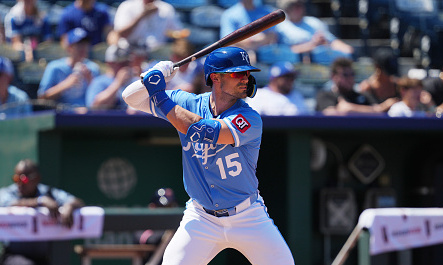Ballparks across America, at every level of the game, have been eerily vacant over the past month due to the COVID-19 global pandemic.
Major League Baseball reportedly is considering a “radical” solution to salvage the 2020 season, which has been in jeopardy since mid-March. MLB suspended all baseball operations just two days after the NBA did the same. As of now, a plan to resume baseball operations has yet to go into effect. All 30 teams, however, could return to their respective Spring Training facilities soon.
The 2020 Major League Baseball season did not start on time. Instead of heading into its third weekend of regular season baseball, not a single game has been played. All 30 MLB teams were well settled in at Spring Training sites in Florida and Arizona, playing exhibition games against other teams so coaches and general managers could decide how to construct their 26-man rosters and decide which prospects need more seasoning in the minors.
According to USA Today’s Bob Nightengale, MLB has discussed a plan that would keep teams aligned in the Grapefruit League (Florida) and the Cactus League (Arizona) while going forward with the 2020 season. Nightengale said the traditional American and National leagues would be eliminated, and teams would play in empty Spring Training stadiums.
Nightengale cited a source who spoke anonymously due to the fact MLB is discussing several other proposals. If this plan were to go into effect, league and division alignment would look like this:
Grapefruit League
North: New York Yankees, Philadelphia Phillies, Toronto Blue Jays, Detroit Tigers, Pittsburgh Pirates.
South: Boston Red Sox, Minnesota Twins, Atlanta Braves, Tampa Bay Rays, Baltimore Orioles.
East: Washington Nationals, Houston Astros, New York Mets, St. Louis Cardinals, Miami Marlins.
Cactus League
Northeast: Chicago Cubs, San Francisco Giants, Arizona Diamondbacks, Colorado Rockies, Oakland Athletics.
West: Los Angeles Dodgers, Chicago White Sox, Cincinnati Reds, Cleveland Indians, Los Angeles Angels.
Northwest: Milwaukee Brewers, San Diego Padres, Seattle Mariners, Texas Rangers, Kansas City Royals.
According to Nightengale, the teams in the Cactus would all be no more than an hour away from each other, which would simplify necessary travel to and from ballparks. Florida presents a bigger challenge, however, since teams are spread throughout the state.
Last weekend, MLB commissioner Rob Manfred held a conference call with President Donald Trump to discuss baseball’s future in 2020. Two days later, MLB presented a possible option, consolidating all 30 MLB teams in Arizona. A press release issued by Manfred’s office said the plan could begin as early as next month but did not provide specifics.
Unlike the ambiguity of the Arizona plan, the Arizona-Florida not only provides specifics but looks to have advantages. For one thing, the Arizona-Florida plan already has a format, making it easier to produce a schedule. Another advantage over the Arizona plan is that every team already has a site where it can go when baseball operations resume. Under the Arizona plan, Florida teams would need to find a temporary home.
Weather patterns in Arizona and Florida during October and November give the Arizona-Florida plan another advantage. Unlike most states, Florida and Arizona remain relatively warm during the fall, meaning teams will still play in baseball weather. Another advantage is that there are three domed facilities between the two states – Marlins Park, Tropicana Field, and Chase Field.
The Arizona-Florida plan creates a situation that is TV-friendly. With Florida in the eastern time zone and Arizona in the pacific time zone during Daylight Saving Time, networks would have an opportunity to broadcast baseball throughout the day and into the night. Fans who live on the east coast would be able to see their teams play during primetime. Fans of west coast teams who don’t live in the pacific team would be able to watch their teams play at a reasonable hour.
Speaking of TV, it would be the only way fans would watch baseball if MLB were to go with this plan. Every game would be played in an empty stadium. Nightengale said that there is a possibility the designated hitter rule (DH rule) would be eliminated this season. Given the circumstances and the hunger that has filled sports fans since last month, MLB has plenty of reasons to get creative to make the 2020 season a reality.
Nightengale’s reporting did not include anything about a postseason format. He did say, however, that there could be a postseason with all 30 teams. This scenario sounds both confusing and unlikely.
It will take time before Major League Baseball can decide on any kind of plan. MLB will have to wait until health and government officials advise that it is safe to begin the season. Also, teams will need to wait for both Arizona and Florida to relax their rules on public gatherings before they can return to their respective Spring Training sites. The anonymous official in Nightengale’s report said MLB is holding out hope that teams can return to their own cities, and that fans can be included at games.
For now, Nightengale said, the organization will continue to explore “anything and everything” to make playing the 2020 season a possibility.







